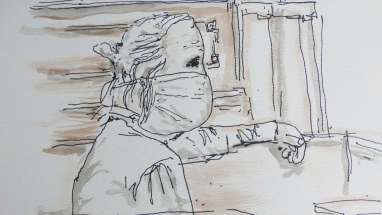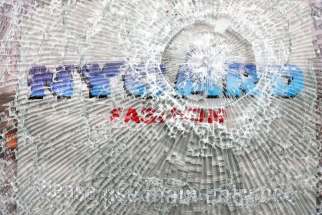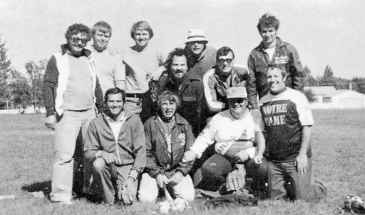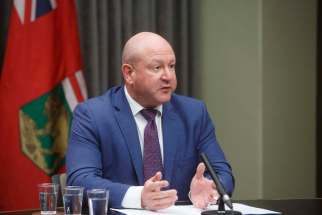Trust in the classroom, trauma on trips Graham James wasn't the only predator teaching at Silver Heights Collegiate; Free Press tracks down former educator, coach who resigned quietly in 1988
Read this article for free:
or
Already have an account? Log in here »
To continue reading, please subscribe:
Monthly Digital Subscription
$0 for the first 4 weeks*
- Enjoy unlimited reading on winnipegfreepress.com
- Read the E-Edition, our digital replica newspaper
- Access News Break, our award-winning app
- Play interactive puzzles
*No charge for 4 weeks then price increases to the regular rate of $19.00 plus GST every four weeks. Offer available to new and qualified returning subscribers only. Cancel any time.
Monthly Digital Subscription
$4.75/week*
- Enjoy unlimited reading on winnipegfreepress.com
- Read the E-Edition, our digital replica newspaper
- Access News Break, our award-winning app
- Play interactive puzzles
*Billed as $19 plus GST every four weeks. Cancel any time.
To continue reading, please subscribe:
Add Free Press access to your Brandon Sun subscription for only an additional
$1 for the first 4 weeks*
*Your next subscription payment will increase by $1.00 and you will be charged $16.99 plus GST for four weeks. After four weeks, your payment will increase to $23.99 plus GST every four weeks.
Read unlimited articles for free today:
or
Already have an account? Log in here »
Hey there, time traveller!
This article was published 15/12/2020 (1822 days ago), so information in it may no longer be current.
IT’S an image that came to haunt Ivano Buccini.
The longtime teacher at Silver Heights Collegiate recalled being impressed in the early 1980s after watching Graham James help a young hockey player with his homework in a classroom.
“I remember thinking, ‘Wow, what a great coach to take this kind of interest,’” said Buccini, who died of cancer in March.
About this series
Graham James was last seen in a courtroom in the summer of 2015.
Appearing via video link from a Quebec prison, the disgraced junior hockey coach pleaded guilty in a Swift Current courtroom to sexual assault on one of his players during the early 1990s, and was sentenced to two additional years behind bars.
But that was not the end of the serial sex abuser’s saga; it was just one more chapter in his sordid life story.
Graham James was last seen in a courtroom in the summer of 2015.
Appearing via video link from a Quebec prison, the disgraced junior hockey coach pleaded guilty in a Swift Current courtroom to sexual assault on one of his players during the early 1990s, and was sentenced to two additional years behind bars.
But that was not the end of the serial sex abuser’s saga; it was just one more chapter in his sordid life story.
While a significant number of the assaults occurred in Saskatchewan, where he coached both the Western Hockey League’s Moose Jaw Warriors and Swift Current Broncos, the James scandal has always been a Winnipeg story.
James worked his way up through the ranks here — in Winnipeg minor hockey, the Manitoba Junior Hockey League and the WHL’s Winnipeg Warriors.
It was with this backdrop that Free Press sports writer Jeff Hamilton began investigating James’ past, from his formative years growing up as an Air Force brat in St. James to his time as a substitute teacher in the St. James-Assiniboia School Division, and from his first foray into coaching minor hockey to his ultimate downfall.
Hamilton interviewed dozens of former players, childhood friends, educators and hockey colleagues and officials.
His investigation reveals an awkward teen who found confidence both in the classroom and at the rink, one that enabled him to embark on his trail of destructive criminal behaviour.
The investigation also paints a picture of complicity or, at the very least, wilful ignorance through all levels of the sport, which allowed James to abuse young players for years.
In total, James has been convicted of sexually assaulting five former players: Sheldon Kennedy, Theoren Fleury and Todd Holt have all publicly shared their ordeals; the identities of two others have been protected by publication bans.
However, police estimate the true number of victims is between 25 and 100.
While powerful institutions, such as the Catholic Church, and prominent individuals, including Hollywood mogul Harvey Weinstein, have all had their moments of reckoning, there has been no equivalent to the #MeToo movement in hockey.
This Free Press investigation attempts to change that narrative by giving voice to victims and asking questions of those who knew or ought to have known what was happening on their watch.
Read the full six-part series, titled A Stain on Our Game.
The youth was Theoren Fleury.
James had recruited Fleury, then 15, to leave Russell and come to Winnipeg for one year to attend school and play for the midget St. James Canadians — the same team James cut his teeth coaching in the late 1970s.
It would be years before the ugly truth of the memory was revealed.
James, who’d arranged for Fleury to stay with a billet family, had already been abusing the boy during twice-weekly sleepovers at his house.
In 2009, Fleury, a NHL star who won both a Stanley Cup and Olympic gold medal during his 16-year pro career, broke his silence in his book Playing with Fire.
James was charged a year later for abusing Fleury and Fleury’s cousin, Todd Holt, who had played for James with the Western Hockey League’s Swift Current Broncos.
“If they could nail Graham some more they should,” Buccini said in a 2019 interview with the Free Press. “What he did was unforgivable.”
”If they could nail Graham some more they should. What he did was unforgivable.”
The answer to the question of how James — who had no university degree — became a substitute teacher is simple: through carefully cultivated hockey connections, a theme that emerges repeatedly through his life.
But how he ended up walking the same school hallways at a time when another teacher was also molesting boys is a mystery that is more difficult to unravel.
Part 3 of a Free Press investigation explores James’ early forays into coaching and his time as a substitute teacher, while uncovering decades-old secrets of abuse.
● ● ●
Not long after graduating from high school in 1971, James faced a dilemma. His father, a non-commissioned officer in the Canadian Air Force, had been transferred back east and would soon be taking his family with him.
James was attending the University of Manitoba, working on an English degree. He wanted to remain in Winnipeg, but with little money had few options for a place to stay.
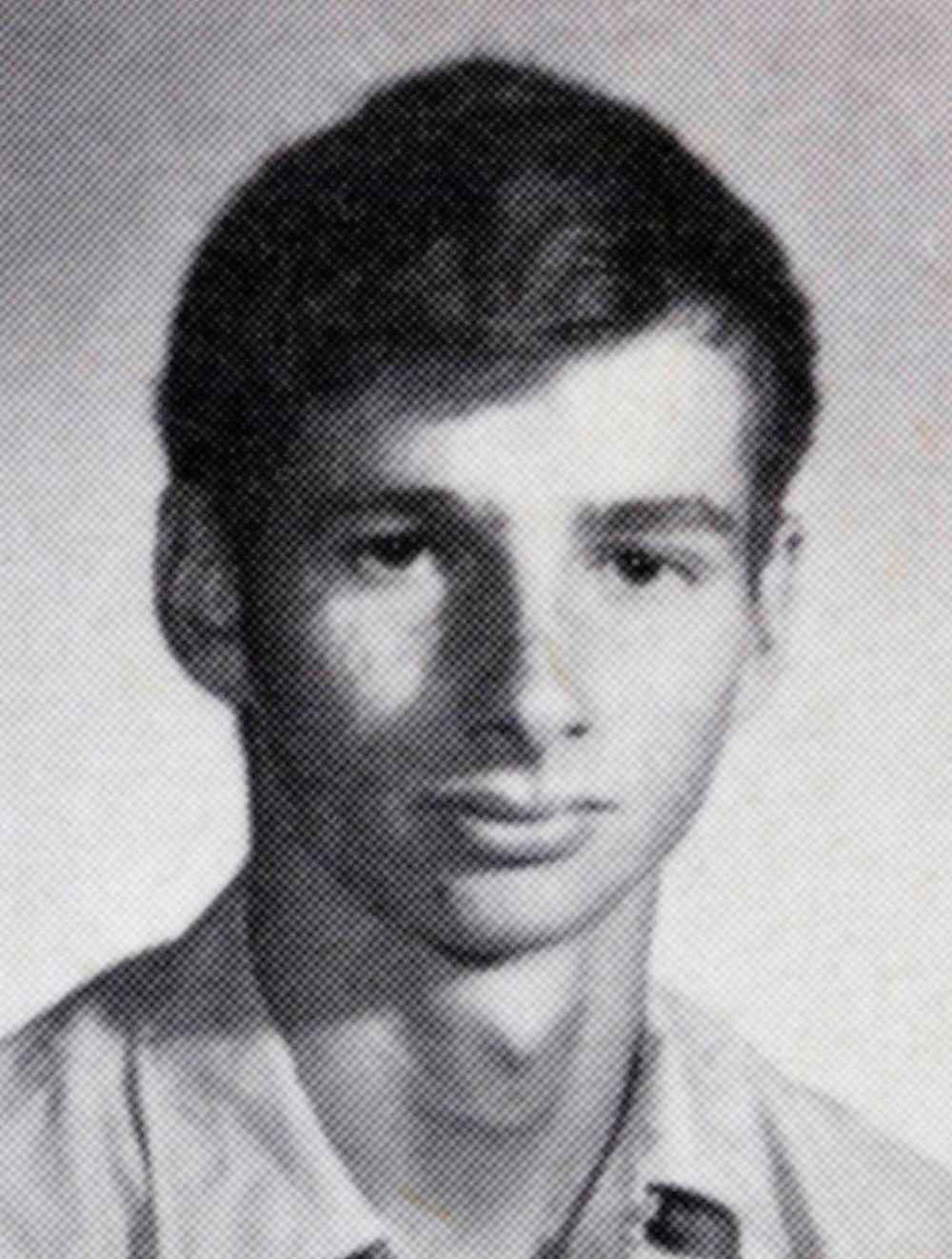
He would crash at friends’ houses, spending a few weeks here and there, surfing from one couch to another. He would sleep in his car or at the St. James Civic Centre. On occasion, he was known to stay with the family of a younger kid he was mentoring in hockey.
Needing something more stable, James reached out to Tom Trosky, a St. James School Division teacher and knowledgeable hockey player and coach who played on the 1965 U of M Bisons national championship team. He had also coached James as a teenager and the two remained somewhat close.
“My wife and I were about to have our first kid and I was building a room in the basement and Graham approached me and asked if there was any way he could stay for a semester to finish school,” Trosky says. “My wife consented and that did happen. So, he was there for a good shot, like three or four months.”
James took the bedroom downstairs and rarely surfaced, even for supper.
Trosky thought nothing of it; James seemed content to sit alone in his room. Also, who was he to complain about a quiet roommate? James never drank or stayed out late.
“He got buried in hockey and just devoted all his time to the game,” Trosky says.
“He got buried in hockey and just devoted all his time to the game.”
But something didn’t sit right with Trosky’s wife, Sharon. There were many things they didn’t see eye-to-eye on.
Trosky, noting James had a temper that would surface occasionally, brought up one altercation between the two, describing it as a “half-assed, semi-argument.” Tired of hearing James boast about his hockey accomplishments, when she never saw anything herself come to fruition, Sharon Trosky called out James.
That criticism was all James needed, Trosky says.
“He then started to work on a benefit hockey game at the St. James Civic Centre, with a lot of NHLers, including Anders Hedberg and Ulf Nilsson, both of whom he became close with,” he says. “He made about $10,000 and, in no uncertain terms, told my wife, ‘There, I’ve done something with hockey. So don’t bug me anymore.’”
Years later, James would be imprisoned for sexually abusing five former players, some of whom he assaulted hundreds of times. Trosky was asked what his reaction was at the time, having known James not only as a former player and tenant, but also later as a colleague; James became a semi-regular presence as a substitute teacher at Golden Gate, the junior high school where Trosky taught for years.
“If I was my wife, I would say, ‘I’m not surprised…’ I was surprised, but somehow she sensed something was not right with him.”
“Let’s put it this way: if I was my wife, I would say, ‘I’m not surprised.’ And she wasn’t surprised,” he says. “I was surprised, but somehow she sensed something was not right with him.”
Trosky adds: “She would say to me sometimes, ‘Well, Graham was down in his room again, not coming up, and I could hear him crying.’ Now, I never questioned him on that. What’s he crying about?
“You’re 20-something years old and you’re crying down in your room, I don’t know what that was about.”
● ● ●
Attempts by the Free Press to talk directly to James were rebuffed, but he did respond to some questions, choosing to forward answers through a longtime friend from hockey.
James, speaking through his friend, credits Trosky for getting him involved in more serious coaching, bringing him on as an assistant with his St. James AAA team in the early ’70s.
The league was outlawed by the province, meaning it wasn’t sanctioned by Hockey Manitoba to compete in its leagues or tournaments. Still, for years the outlaw league attracted the city’s top players and, because James had already built a close relationship with some of them in St. James, having him on the staff made for a seamless fit.
Trosky denies putting James behind the bench but does admit helping out with his career. Although James was a mediocre player, he thought the game better than anyone else he’d seen at that age.
“He knew hockey. He ended up getting his Level 5 coaching certification… it was as high as you could get, so there was no doubt about that,” Trosky says. “That was his hope, of maybe going on and coaching at a higher level.”

In a twist, it was a relationship through Trosky’s wife that landed James with the Flin Flon Bombers. The Bombers, from 1968 to 1978, were part of the Western Canadian Hockey League, now known as the Western Hockey League. Sharon’s dad was a member of the team’s executive.
“I told him about Graham. I said, ‘Graham knows a lot of kids in the area and could Flin Flon use a scout?’” Trosky recalls. “So now he’s bird-dogging for Flin Flon, going from one little town to another making connections on his way.”
James had exactly what teams wanted from a scout: a personal relationship with players. In hindsight today, given just how close he was to the players, there should have been red flags. Back then, though, it would have been viewed as a major asset.
And it only helped that St. James was producing some of Manitoba’s top young talent. With the way player recruitment worked in the 1970s WCHL, where there was no formal draft as there is today, the power of persuasion was of great importance.
James’ promotion to a WCHL scout marked the first time he was handed significant power in the game. With the new title, he was starting to be recognized as a valuable connection, catching the eyes of not only young players, but their parents, too.
“He always seemed to have – and that’s the ironic thing – a really good relationship with his players.”
“I can’t remember the exact details because it was 40 years ago, but Graham made some good choices with Flin Flon,” says a former NHL scout, who requested anonymity. “He always seemed to have — and that’s the ironic thing — a really good relationship with his players.”
James’ connection with the Bombers led to a demand for him to be behind a bench. It was only natural that the opportunity would be in St. James.
Soon, he was named head coach with the bantam Canadians, a club filled with talent. A year later, with him behind the bench, the team was playing in the 1979 Air Canada Cup, the inaugural national midget hockey championship.
●●●
James was starting to make a name in hockey but being a part-time scout and minor-hockey coach hardly paid the bills.
He was also working at a Manitoba Liquor Commission store. The job choice is somewhat of a surprise, because James never touched the stuff. Later, while coaching the Swift Current Broncos, he turned down a beer sponsorship, instead choosing milk as the team’s official drink.
Those who knew James said he often tried to give the impression of being morally superior. He also used to impress parents with how much importance he seemed to place on getting a good education, despite his own shortcomings (he didn’t finish his university degree until he was in prison).
By his mid-20s, he started working as a substitute teacher. While current standards of hiring fill-in educators are more stringent, it wasn’t the case in the mid-1970s.
James, through his friend, says he can’t remember the exact details of his hiring in the division, other than recalling that he filled out an application form. Others claim it was his position as the bantam Canadians coach that led to his hiring.
“When Graham was working at the liquor commission, the principal at Golden Gate Junior High was John Atamanchuk. Well, his son was a (Tier 2) St. James Canuck and he wanted him to be on the Canadians, so he checked with Graham that he had a degree in English, so he got him in subbing,” says a former teacher who knew James.
But he didn’t have a university degree.

“I know. But at that time, if you had blood flowing through your veins… they were just so desperate for bodies,” the now-retired teacher says. “So he would sub at Golden Gate and Silver Heights, and that’s where he would work almost every day of the week.”
Despite hiring James, the favour to Atamanchuk, who died in a 2009 house fire, was never returned. Atamanchuk’s son was cut from the team.
Meanwhile, James was making more connections in hockey, mixing with some of the most prominent professional players in the city. That included tutoring English to Sweden-born players Hedberg and Nilsson — a duo that made up two-thirds of The Hot Line, the famous Winnipeg Jets WHA trio that also included Bobby Hull.
That connection only added to James’ allure as an up-and-coming coach and asset to the school division.
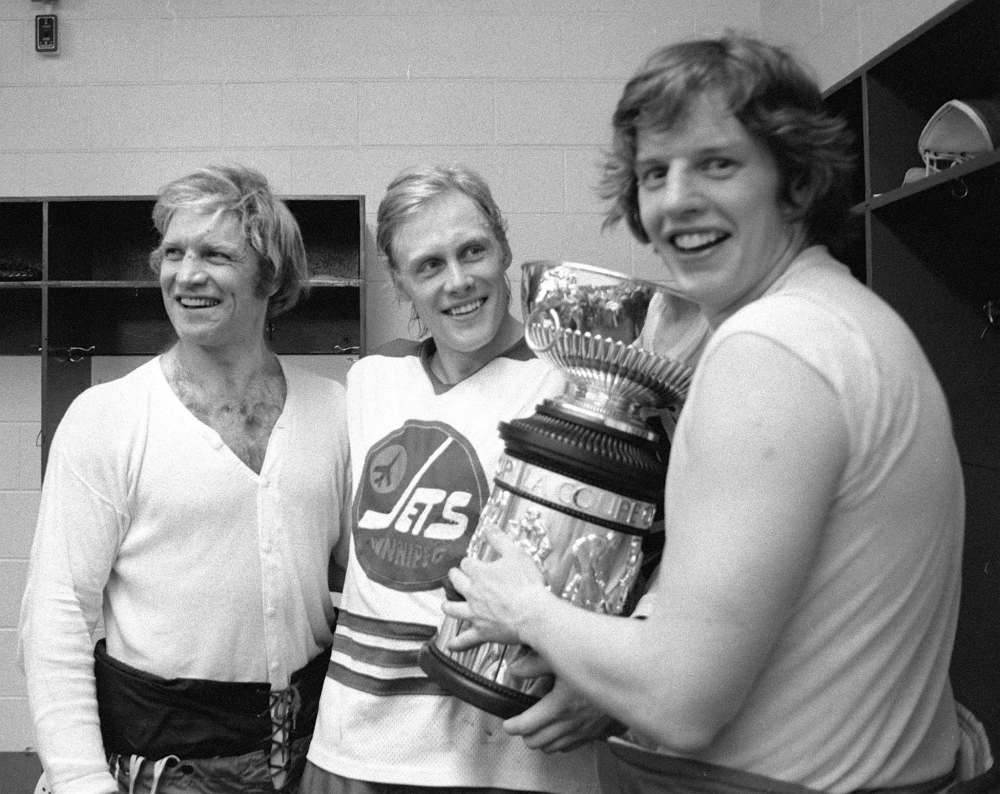
While he provided Nilsson and Hedberg with lesson plans, what he got in return was the chance to study a more skilled game being perfected by the Swedes. James had always favoured puck possession over the rough-and-tumble play that was preferred in Canada.
In a phone interview from his home in Sweden, Nilsson says he remembered seeing James around the St. James Civic Centre at all hours. James was there for morning workouts and again when they skated well into the night.
Laughing at how he still struggles with the language despite spending years in Canada and the U.S. playing with the WHA Jets and later in the NHL, Nilsson denies James had any significant role in teaching him English.
“What I really remember was how weird Graham James was and the way he used to laugh,” he says.
Hedberg didn’t reply to multiple requests for comment, but it’s clear he had a better relationship with James than Nilsson did. Hedberg was one of several former and current NHLers to invest with James in the purchase of the WHL’s Calgary Hitmen in 1995.
And James had Hedberg, along with his wife, Gun-Marie, run some gym classes for students at Golden Gate, with lessons on fitness and cross-country skiing.
“He was ALWAYS around, to the point where Anders and I would say, ‘Does this guy ever work?’” Nilsson says.
●●●
It’s difficult to recall details of someone from 40 years ago, particularly a substitute teacher. But James was the exception because he had a way with kids, one former student says.
“We looked forward to having him as a sub,” says the woman, who wants to remain anonymous. “We used to call him Mr. Graham or Mr. James because he was the man with two first names.”
Her first introduction to James was at Golden Gate, either in Grade 7 or 8, and he remained a semi-regular presence through her high school years at Silver Heights. What was most impressive, she says, was even though James wasn’t a full-time teacher, he still made sure to memorize names; that way, when he returned, it was as if he never left.
Many reporters who covered the WHL between the mid-1980s and mid-’90s considered James to be among the league’s most charismatic coaches. And just as he would feel at ease running a media scrum, he proved as comfortable commanding a classroom full of teenagers.
“You know how people call someone a player’s coach? Well, he was a real student’s teacher,” the woman says. “He was somebody that stood out, the kind of person that made a mark on you.”
Full-time teachers, such as Buccini, had similar things to say.
Struggling with his emotions over a phone interview with the Free Press in summer 2019, Buccini was hesitant to speak positively about someone he no longer respected. But he added he wouldn’t be telling the whole story if he left details out. He went as far as to say many viewed James as a “great guy.”
●●●
The positive vibe James gave off as a substitute teacher was similar to that of another educator at Silver Heights at the same time.
Tom Easton, like James, was a popular teacher. To many, Easton provided the kind of high school experience few others could — or cared to — offer.

Hired in the fall of 1969, at age 23, Easton spent much of the next two decades at Silver Heights, and then John Taylor Collegiate. He coached various teams, including boys’ basketball and baseball, despite not being much of an athlete himself. He also helped put on musicals and supervised student council committees.
“He was single. He didn’t have a family, no children to worry about or take care of after school,” says a former colleague at Silver Heights, who also coached with Easton at the school. “He was a very involved person at the school and I always respected that.”
While Easton made a positive impression on some students, he, like James, preyed on others.
Based on numerous accounts from former students and co-workers, Easton engaged in reckless, yet calculated sexual abuse that began shortly after he started teaching. It ended only after he resigned in 1988 amid allegations of inappropriate conduct.
Easton’s story, and the number of decades-old assaults uncovered in the Free Press investigation, speaks to society’s willingness at the time to overlook inappropriate behaviour between teachers and students and offers some insight into how James got away with his crimes.
“There were always stories about Tom, you always heard things. I guess back then it was a ‘blinders on’ kind of thing, just innuendo and people not willing to come forward.”
The Free Press has had contact with seven former students who accused Easton of sexual abuse.
“There were always stories about Tom, you always heard things,” says a former teacher who knew both Easton and James. “I guess back then it was a ‘blinders on’ kind of thing, just innuendo and people not willing to come forward.”
He adds: “When Tom did get caught — and Graham, too, for that matter — teachers were terribly offended by it, but it always just kind of gets swept under the rug until it doesn’t. They were really good at hiding it, but I guess that’s typical of predators.”
●●●
Easton enjoyed socializing with his students, often hosting gatherings at his home. Usually they were informal team windups.
A familiar scene, described by several students, involved Easton tending the barbecue outside, while others were inside watching sports on TV.
But he didn’t simply invite the team over for a home-cooked meal; alcohol also was served. In fact, it was common practice for Easton to offer an “Easton Special” — a drink made with equal parts rye whisky and cherry brandy, mixed with 7-Up and topped with a cherry garnish.
“It was a different time. But when you’re 16 you’re not thinking you shouldn’t do that because your teacher might get in trouble or that it’s wrong,” says a former Easton student who later became a teacher.
“I remember being there a few times where guys got pretty liquored. But having said that, nothing untoward ever happened, as far as I know.”
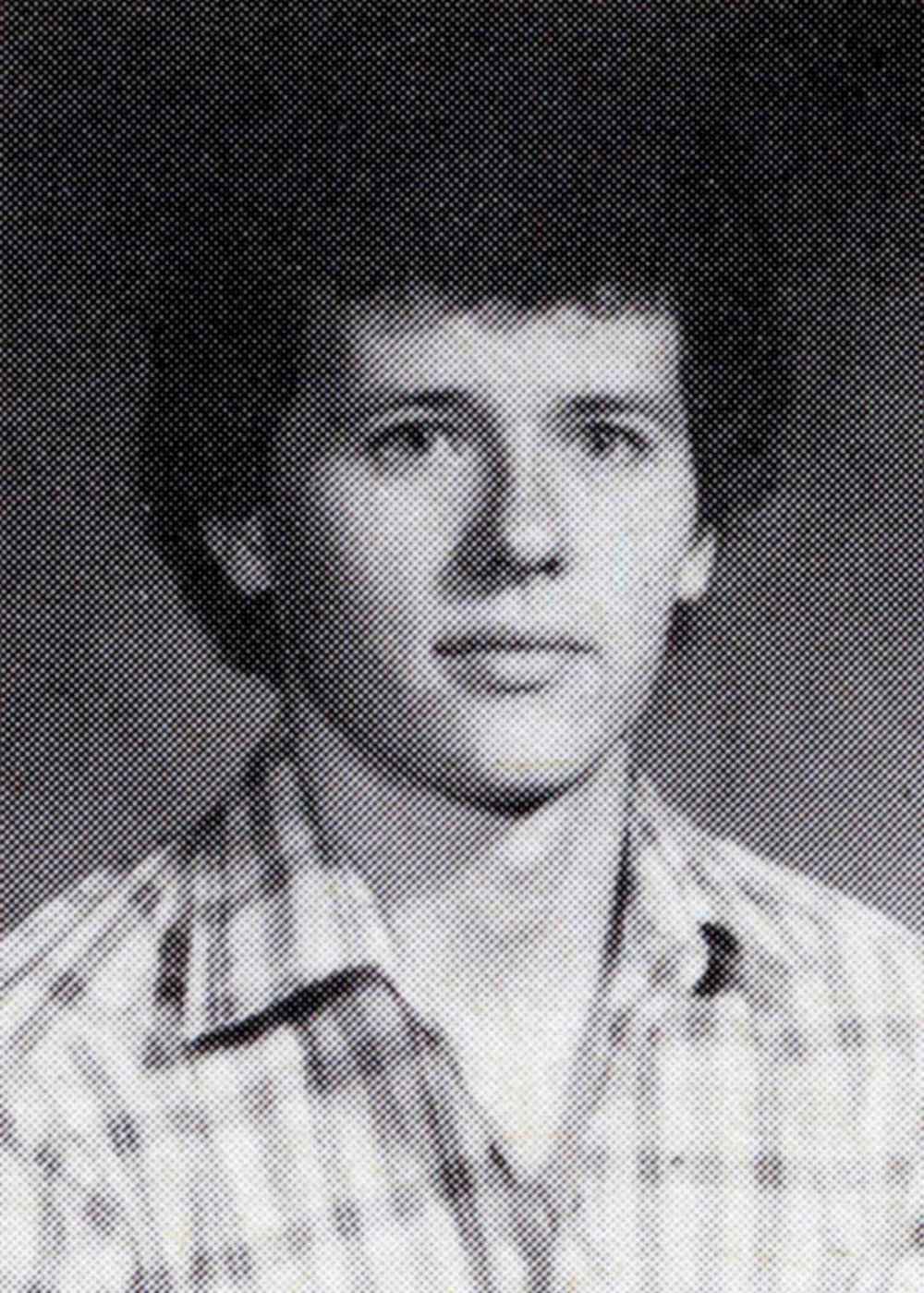
That wasn’t Randy Pauls’ experience.
Pauls, now a high school principal in B.C., recalls pornographic magazines strewn across tables. Decades later, he believes they were simply props to trick the students into believing Easton was someone he wasn’t.
Pauls was in Grade 12 in 1981. He knew Easton only for one year, as his baseball coach, after Easton had switched to John Taylor Collegiate following 10 years at Silver Heights.
“He used his role as a coach to groom a lot of kids, to try and sexually exploit them,” Pauls says. “He would invite the whole team over, he would have Playboys lying around for the guys to look at, which he told us not to tell our parents (about).”
From there, Pauls says, Easton would select one or two players to invite back to his home on Woodhaven Boulevard. Pauls was one of the boys who returned a second time. He says he and a friend weren’t told to bring anything, but when they arrived Easton suggested they hop in his basement sauna, using towels he had provided.
That led to a third visit, Pauls says, this time to play tennis, just the two of them. Easton made a move when they returned to his home.
“I can’t remember if he offered me a beer or not at that point but I was sitting at the table and all of a sudden he was massaging my shoulders,” Pauls says. “And then he reached down and grabbed my balls.”
Pauls immediately rebuffed the advance, jumped on his bike and never saw Easton again.

Doug Kozak has a similar story that occurred years earlier.
Kozak was considered one of the top athletes at Silver Heights. A physically fit and respected Grade 11 student, he participated in several different sports, including basketball, with the Easton-coached varsity boy’s team.
In 1976, the team was in Estevan, Sask., for a weekend tournament. Upon arriving, Kozak was surprised to learn he’d be sharing a room with the coach, but gave it little thought.
“But when we got up to the room there was only one bed — a queen-sized bed,” Kozak recalls.
Though the situation was odd, the first night was uneventful. The following night, however, Kozak woke up between 2 and 4 a.m. with Easton holding him in a bear hug.
“He’s breathing on me and he’s got his head up against the side of my face, with his hands completely around me,” Kozak says.
Assuming Easton was asleep and it was an honest mistake, Kozak laughed before yelling for him to wake up. Only Easton wasn’t sleeping.
“I can never forget the words. He said, ‘I am awake.’ He just whispered in this kind of feminine, almost dainty, voice. I just kind of froze for a minute and then I started shaking.”
Easton started to move his hands up and down Kozak’s chest, saying he was checking his body temperature.
“He started feeling my armpits and then down into my crotch area,” Kozak says. “That’s when I drove my heel backwards, into his crotch, and I just jumped out of the bed and ran into the hallway.”
“I just kind of froze for a minute and then I started shaking.”
Kozak took refuge in a friend’s room down the hall where he curled up into a ball.
An incensed Easton began banging on doors before finding Kozak, yelling at him to return to their room. As a nervous Kozak took a step into the room, the building’s fire alarm blared.
“A fire had started in a kitchenette on a floor below us. I was literally saved by the bell,” he says.
He didn’t tell his parents when he returned home. He feared his father, who worked for the division as a night supervisor for the custodial staff, as well as a pastor, would physically harm Easton.
Easton’s stellar reputation further complicated things. Because he was universally liked, especially by students, Kozak felt powerless whenever he tried to tell others what happened.
“I actually lost some friends over it. Some of those guys I tried to warn after it happened, they had incidents themselves and they came to apologize to me because something else had happened,” he says.
“They didn’t divulge too much at the time, but later they definitely said, ‘Oh, yeah, we learned the hard way.’”
●●●
Last December, the Free Press travelled to British Columbia, where Easton currently lives.
After four days, he agreed to meet on the pretence he might be able to offer insight as James’ former teacher. The mood dampened when the conversation shifted to sexual assault accusations.

The former teacher, in his mid-70s and having battled asthma his whole life, looked frail. When asked if he could explain himself, he fell quiet, breaking his silence only to say he wasn’t ready to discuss his past, at least not at that moment.
But he reached out the following day and, over a half-hour phone interview, expressed a multitude of feelings regarding his behaviour.
“There’s something that I wanted to tell you and I have thought about this quite a bit,” Easton said. “If I could go back 50 years and change anything I would change it all because I deeply regret what I did.”
“If I could go back 50 years… I would change it all because I deeply regret what I did.”
What followed was equal parts confession and denial. He did not say if there were any more students who experienced his sexual advances beyond what the Free Press had been told.
He said he couldn’t recall the earliest-known incident, which occurred just a year into his teaching career. A former student claimed Easton tried to grab at him while exiting the shower on a basketball trip, only to be met with a right hook to the head.
Easton also downplayed the incident with Kozak.
“Even though we shared a bed there was nothing happening there,” he says.
To Easton, the word “nothing” seemed to describe the end result rather than the act. The fact nothing happened didn’t mean he didn’t want something to happen or that he didn’t try, but simply that nothing ultimately transpired.

However, he did admit to other incidents, including entering a student’s home uninvited when he was home sick from school. But even that had a caveat to it; he said his behaviour was the result of incredibly bad judgment.
“I apologized for that,” he said. “I guess I went over there. I don’t think I ever touched him but he thought I made a pass at him. I left his house and then went back later that day and I apologized for my behaviour.”
As for the incident with Pauls, Easton said it was the “same sort of thing.”
“I made a pass at him and he wasn’t interested,” he says. “He left and that was it.”
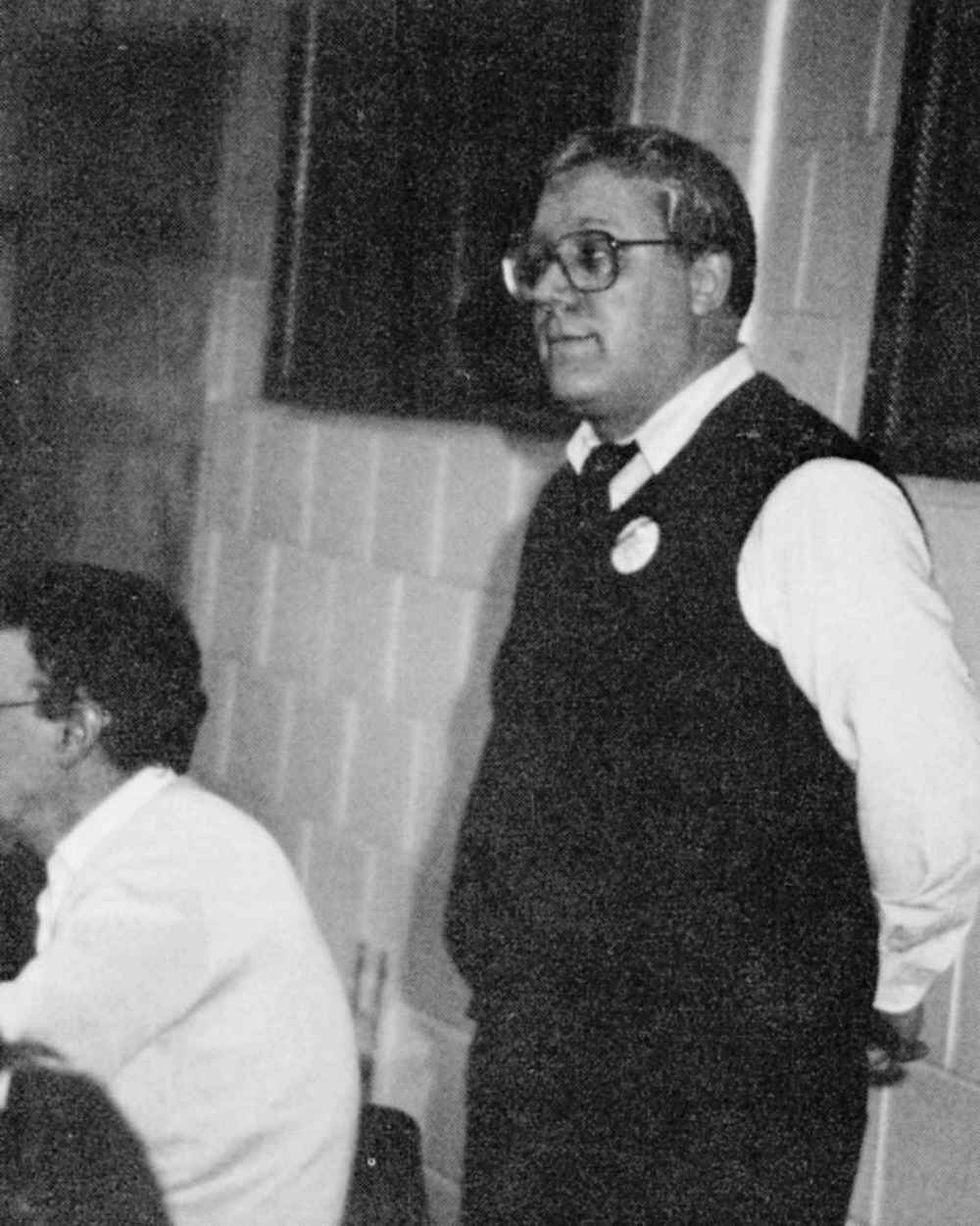
Then there were incidents Easton described as consensual, referring to former students as “willing participants.” He struggled to find an easy explanation for his behaviour, even though he claimed to regret his actions.
“I’m just wondering if it was some urge that I had that I couldn’t control. There were very few that I was attracted to. If I wasn’t attracted to anybody, I just left them alone,” he said, noting that he probably understood that what he was doing was wrong.
“A lot of the time when I found out the person wasn’t interested, it was like… one and done and it was over.”
Easton eventually reached out for professional help to better understand his behaviour, but not until years after leaving his career in education.
Most of his victims have been able to move on to successful and normal lives. But all have struggled to understand why they had been singled out.
Some felt like they were preyed on, manipulated into thinking they had the respect of their teacher. Others felt guilty for being naive enough to be put in such a vulnerable position.
”They happen to be in the wrong place at the wrong time.”
Easton had difficulty coming up with a justification for his past behaviour. But with a few moments to reflect, he came up with a troubling rationalization.
“Maybe one of it was just availability. And I thought there might have been a possibility (of reciprocation),” he said, before expanding on his theories.
“Well, they happen to be in the wrong place at the wrong time.”
●●●
Easton submitted his letter of resignation in the summer of 1988 and, a few months later, moved to B.C. His swift departure from John Taylor came amid allegations that he had sexually abused a student on a school band trip to Europe.

Peter Anadranistakis had just finished Grade 11 and was an active student, participating in sports and band. He had hoped the trip to Europe would be a once-in-a-lifetime experience.
When the time came to leave, life hadn’t gone to plan. Anadranistakis had broken up with his girlfriend and was noticeably heartsick.
Easton picked up on his mood. Usually the outgoing kid, the type of guy who prided himself in being the class clown, Anadranistakis was suddenly quiet and reserved.
“He was just very methodical about everything,” recalls Anadranistakis, a successful entrepreneur who splits his time between Winnipeg and Phoenix. “It was like Step 1, Step 2, Step 3, Step 4, all the way to… you know.”
Step 1 included Easton offering a ride back to the hotel following a long day of rehearsals and sightseeing. Anadranistakis welcomed the escape from the other students, including his ex-girlfriend.
During the 90-minute ride, Easton asked Anadranistakis about a nagging leg injury he had during his junior varsity basketball season. When Anadranistakis said it was still bothering him, Easton said he could help with that.
“It sounds stupid now but he tells me that he can cure me and that he knows these special healing techniques,” Anadranistakis says. “I trusted him, so I agreed. He told me to come meet him in his hotel room and to wear shorts. I’ll never forget the way he said ‘wear some shorts.’”
“It sounds stupid now but he tells me that he can cure me and that he knows these special healing techniques.”
As he walked into Easton’s hotel room, Anadranistakis recalled it being dark, with only a few candles providing light. Easton got him to lay down on the bed, where he started to work on his leg.
“It started off as trying to do some sort of a massage and the next thing I knew my shorts were down and he has his hands on my genitals,” Anadranistakis says. “I just remember thinking to myself, ‘This does not feel good and this is not right.’ I knew I had to get out of there but I just froze.”
A loud noise in the hallway was enough to snap Anadranistakis back to reality; he jumped up, grabbed his stuff and fled.
Easton admitted to being in the hotel room with Anadranistakis but denied that anything sexual occurred. But when asked if he might have got a bit aggressive with his massage, he said, “perhaps, yeah.”
“We were both naked in the room, which was a bad thing. I don’t know why,” Easton added. “I was totally exhausted from that band trip and so when there was no yea or nay reaction, I just shut it off and he got dressed and went back to his room.”
Anadranistakis remembers meeting the rest of his classmates for dinner, where he disclosed to a friend what had happened. The friend then told other teachers and a quick investigation occurred.
Easton said the band director, Ross Shaver, reported him to the local authorities — likely in England, though the details are blurry — but was told to deal with the situation in Canada.
“I grew up in a household of Greek immigrants and we don’t talk about anything. I didn’t even know how to process everything that was happening.”
Once home, Winnipeg police launched an investigation. In order to proceed with criminal charges, though, they would need Anadranistakis’s testimony. But when they arrived at his house, his parents refused to let them inside and Anadranistakis, embarrassed by the attention, declined to co-operate.
“I can’t say I wish I did more about it at that time. I am who I am,” Anadranistakis says. “I grew up in a household of Greek immigrants and we don’t talk about anything. I didn’t even know how to process everything that was happening.”
Easton said he had a meeting with the assistant superintendent. After that, it went to the Manitoba Department of Education for a hearing to determine whether he should have his teaching credentials revoked. Easton said he was called in for a second meeting. That’s when he wrote his letter of resignation.
“Near the end of August I just dropped off the letter at the school board office and that was about it,” he said.
A story about the incident was published on the front page of the Free Press on Oct. 20, 1988. It tells much of the same story: the cops investigated, the parents of the victim were satisfied with the outcome and the teacher, who wasn’t named, agreed to resign.
Easton said his credentials weren’t formally revoked but he agreed to stop teaching kids. When he arrived in B.C. he took a job with Revenue Canada, where he taught GST classes to adults before eventually retiring. He also claimed that after the incident with Anadranistakis he was able to abstain from making any more unwanted sexual advances.
“That was the thing: once I was out of the school system, I probably didn’t have any urges at all because I wasn’t around sort of late teenagers,” he said.
“I was sort of warned never to get a job working with kids again, which I haven’t. But the urges were already gone, pretty well.”
He added: “Probably every year I think about what I did. I don’t know where to find any of these people, but should I send a letter and apologize for my behaviour? I wonder if that would even do any good at all.”
●●●
Of all the allegations directed towards Easton, the one he vehemently denies is having a relationship with Graham James, sexual or otherwise.
Easton said he knew James at Silver Heights, first as one of his players on the school’s provincial championship-winning baseball team in the early ‘70s. But he went as far as to say he couldn’t remember what position James played.
He is adamant James was never a student of his and that he “probably wouldn’t even say hello in the hallway.”
“I have no idea where they would get that idea because I had no relationship with Graham whatsoever,” Easton said.
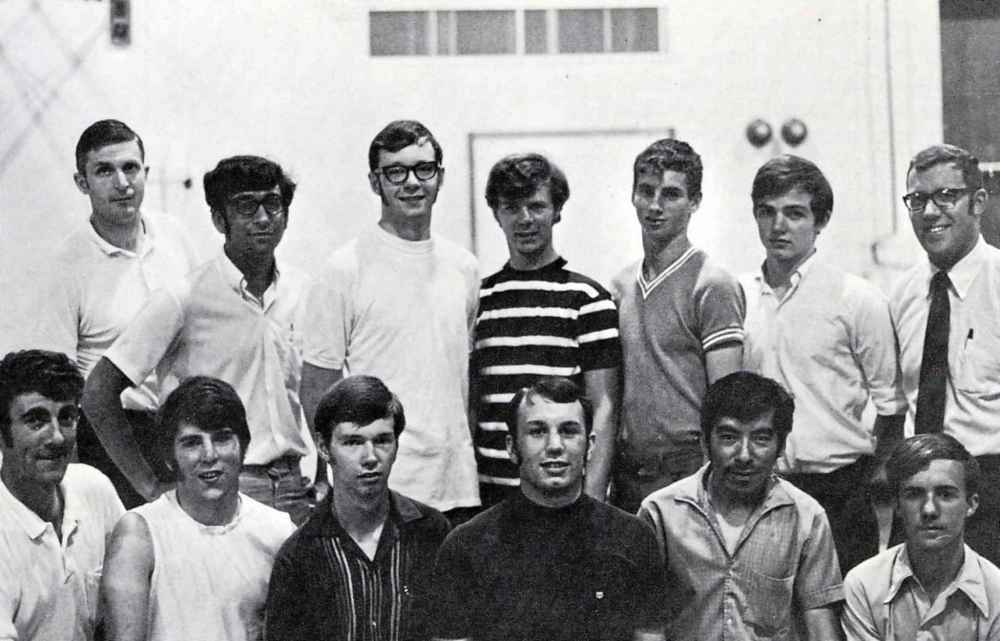
James, speaking through a friend, also denies being close with Easton. He says he couldn’t remember which school Easton would have taught at, whether it was at his middle school or high school. He did admit, however, to talking sports with Easton from time to time.
James also recalls seeing Easton years later, while he was coaching the Swift Current Broncos sometime in the early ‘90s. The two crossed paths in Vancouver at a horse racing track, where they had “a big conversation.”
“Graham said it was a real aberration. They were out there for a Western Hockey League meeting and a bunch of guys wanted to go to the racetrack and he went with them,” James’ friend says.
He adds that James also said he had been notified by someone, though he couldn’t remember who, about the allegations of sexual abuse levelled against Easton but that he “didn’t know him well enough to be shocked or not.”
Despite their denials, others recall seeing the two together in the years after James graduated from high school.
Kozak never had James as a substitute teacher, but remembers meeting him when he played on a baseball team with both Easton and James.
“We were playing some kind of men’s tournament and that’s the only time I ever met Graham James,” Kozak says. “He and Easton were definitely organizing the team together. That’s what I remember.”

James, again through his friend, said he used to be involved in setting up teams from the school to go to tournaments but that it involved a number of people. He added he “has no recollection of Tom Easton being the guy involved from the school,” but also didn’t rule him out.
Similar to James, Easton didn’t abuse every kid he spent significant time with. There were others he truly mentored, including Tom MacLeod, a classmate of Kozak.
After MacLeod finished high school he and Easton remained friends, and Easton helped him earn a teaching job once he graduated from university.
And while MacLeod respected Easton, he did have his own concerns.
“There were rumours in high school about Tom but I never really… it’s not that I didn’t pay attention to them, but as a student and because they were just rumours there was not much I could do,” he says.
There was also a brief time, nearly two months, that MacLeod lived with Easton. This wasn’t exactly significant, as Easton opened his home to other former students who needed to rent a room. He also hired former students to work on his home.
MacLeod says although he has never met James, he insisted the pair were friends. He also suggests Easton might have been a manager for one of James’ teams, something James denies.
“I know that they were good friends. That’s all I can really say,” MacLeod says. “I don’t know what they did socially together and that kind of stuff.”

Easton was also a favourite teacher and trusted mentor for Mark Nelson, a former Silver Heights student and Kozak’s best friend at the time.
When he needed help earning his Bronze Medallion to become a certified lifeguard, it was Easton, who had experience as a lifeguard and swim instructor, who offered the pool at his apartment to train.
When Nelson graduated in 1977 and was looking for a summer job, Easton used his connections at Plummer’s Lodge, a fly-in fishing resort in the Northwest Territories that runs its headquarters out of Winnipeg, to get him a shot as a fishing guide.
But by the end of the summer, things took a bizarre turn.
As part of their journey back home, they first had to fly to Yellowknife, where they would spend the night before the long trek to Winnipeg. When Nelson entered a Yellowknife hotel room the morning he was to leave, Easton and another man were dressed only in their underwear. Minutes later, they were trying to wrestle him on the bed.
“They wanted to throw me down on the bed and grab me and wrestle with me. They started to do that and that’s when I was like, ‘this isn’t right,’” Nelson says.
“At some point I got a little afraid, because I didn’t know what was going to happen. So I said to Tom that I’ve got to go home, that I’ve been there long enough.”
“They wanted to throw me down on the bed and grab me and wrestle with me. They started to do that and that’s when I was like, ‘this isn’t right.’”
Nelson says he couldn’t understand why they were “really pissed off, like really pissed off” at his unwillingness to participate. But he wasn’t willing to wait around for an answer.
“I think they realized that this wasn’t going the way they wanted it to go. I guess they didn’t like someone standing up to them and they knew at that point I wasn’t backing down,” he says. “That’s the last contact that I’ve ever had with Tom.”
Nelson didn’t realize the magnitude of the situation until he was older. It was nearly 20 years later that he learned the other man’s identity.
“When I saw Graham James in the news years later, I said, ‘I know this guy. I’ve seen him somewhere,’” Nelson says. “And then I realized that’s the guy I saw in the hotel with Tom and wanted to do some wrestling in the bed. That was my ‘holy shit’ moment.”
jeff.hamilton@freepress.mb.ca

Jeff Hamilton
Multimedia producer
After a slew of injuries playing hockey that included breaks to the wrist, arm, and collar bone; a tear of the medial collateral ligament in both knees; as well as a collapsed lung, Jeff figured it was a good idea to take his interest in sports off the ice and in to the classroom.
Our newsroom depends on a growing audience of readers to power our journalism. If you are not a paid reader, please consider becoming a subscriber.
Our newsroom depends on its audience of readers to power our journalism. Thank you for your support.

